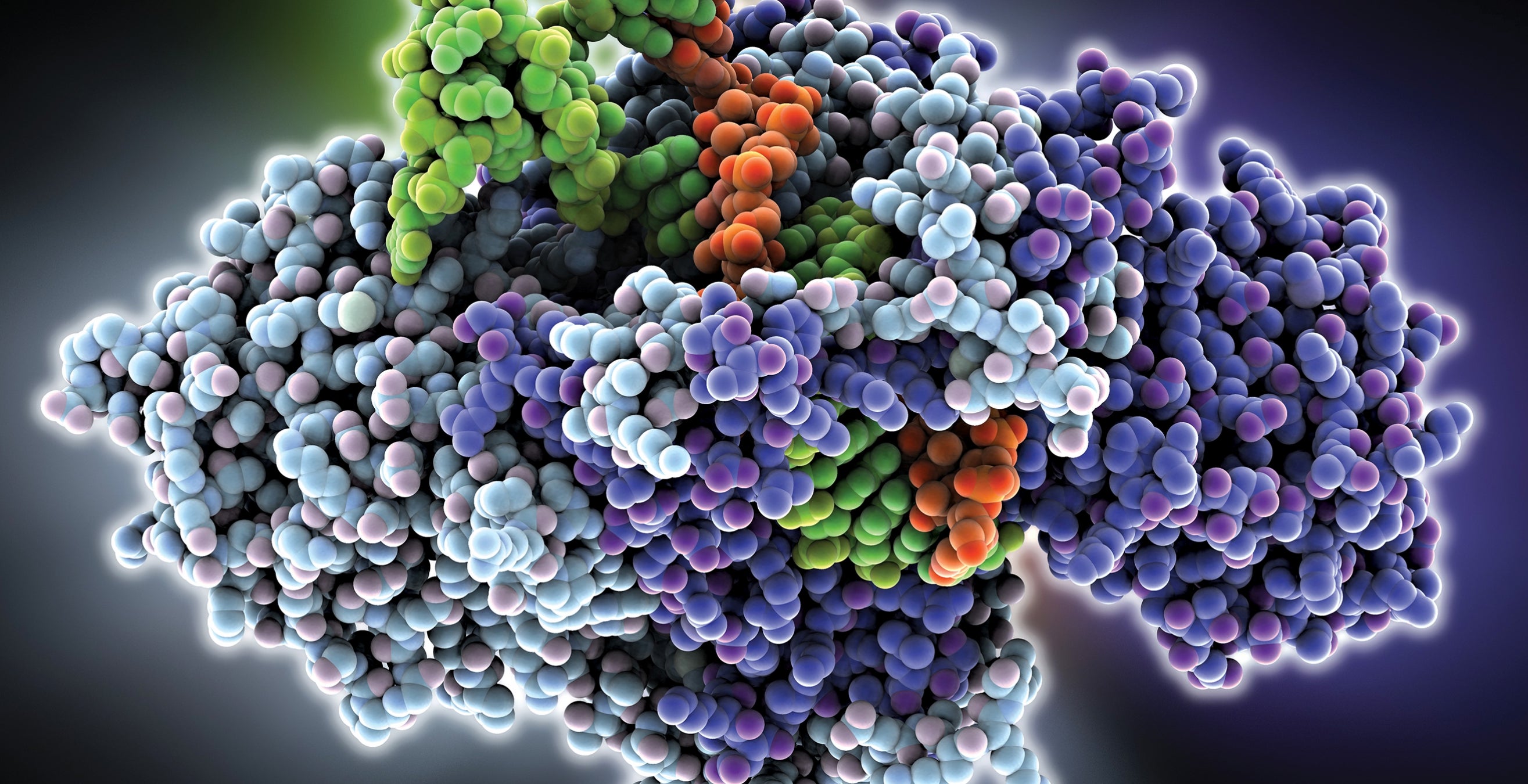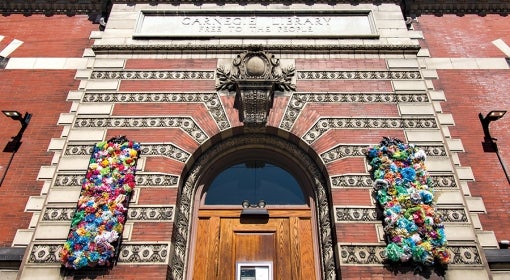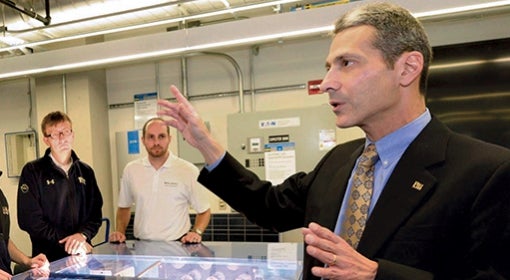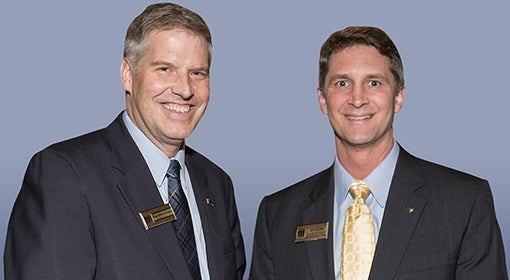Imagine a necklace strung with multicolored pearls. Lustrous beads alternate in different hues, forming an intricate pattern. The priceless relic was passed down through generations. Then, one day, the strand snaps. Pearls scatter to the floor. Some get lost; others chip. Is it possible to mend the break, to string the pearls back in place, exactly the way they were before?
Scientist Kara Bernstein considers this conundrum often, but not out of love for antique jewelry. An assistant professor of microbiology and molecular genetics in Pitt’s School of Medicine, Bernstein studies a different sort of family heirloom: DNA. In her lab, she examines how strands of DNA break, how damaged DNA gets repaired, and how understanding those repair mechanisms could lead to new forms of cancer therapies.
To explain her nuanced work, Bernstein often uses the necklace analogy, in which the strand represents a DNA chain, the pearls its components. No strand of fine jewelry is immune to daily wear and tear, and neither is genetic information. DNA gets altered naturally over the course of a lifetime—an estimated 10,000 to one million lesions per day, per cell, in the human body. In normally functioning cells, there’s order in the chaos that ensues. DNA-repair proteins assess the damage and replicate the portions of genetic code that have been compromised. But trouble arises when these proteins don’t function properly.
Mutated repair proteins can allow faulty genes to proliferate into faulty proteins, which may result in tumor development. “Losing genetic information and rearranging genetic information are both hallmarks of cancer,” says Bernstein, who is affiliated with the University of Pittsburgh Cancer Institute. She focuses her work on these pitfalls of repair.
Last summer, Bernstein’s lab published a landmark paper in Nature Communications. The study revealed for the first time how a critical class of repair proteins, called Rad51 paralogues, plays a role in the assembly line of restoring DNA. The performance standard for this microbiological cleanup crew is high; where Rad51 paralogues are mutated, breast and ovarian cancers have been known to appear. Now, thanks to Bernstein’s breakthrough, scientists can use this new knowledge of typical Rad51 paralogue function to develop novel ways of treating patients with genetic predispositions to cancer.
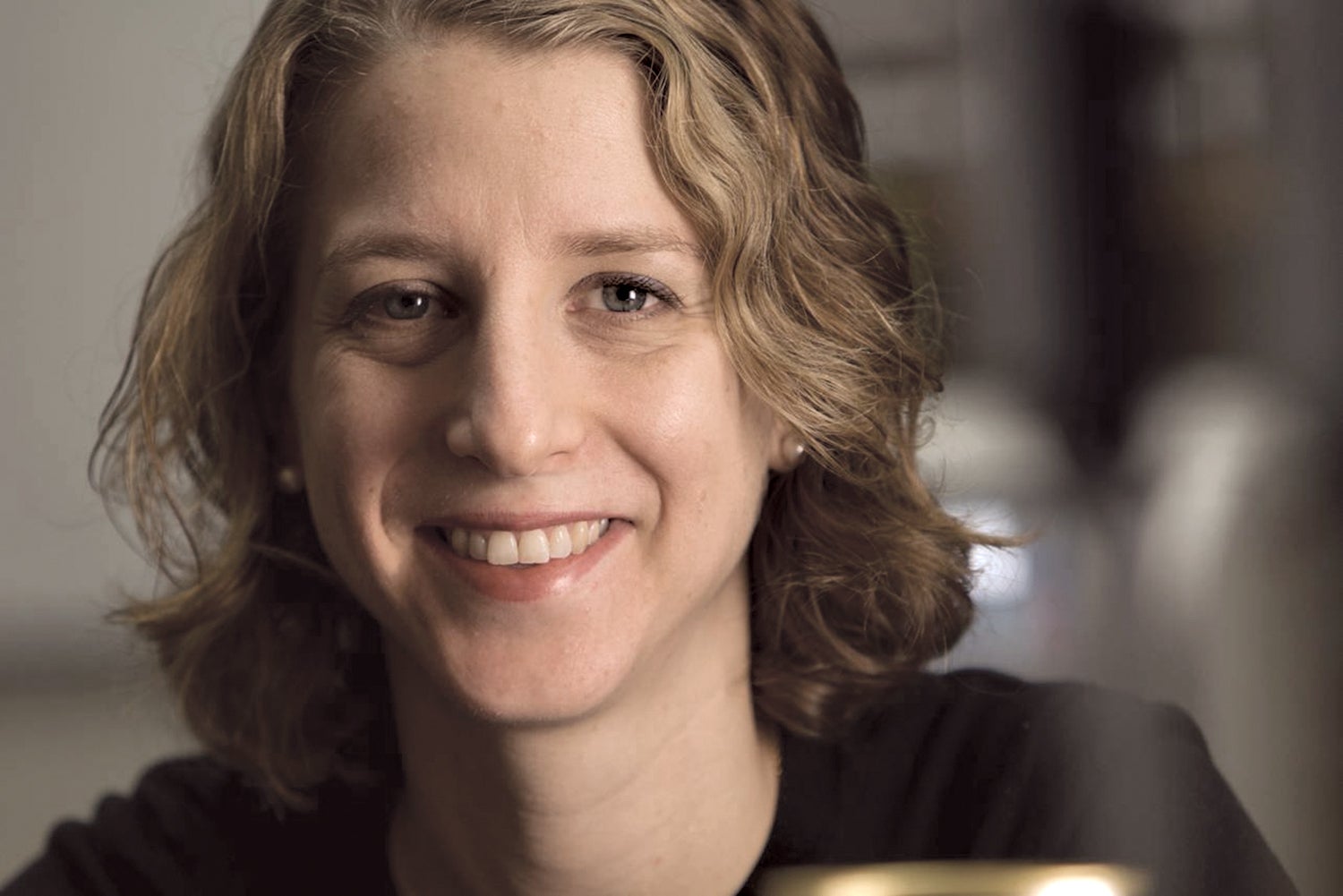 It’s an impressive chapter in an enterprising career that blossomed when Bernstein was a PhD candidate at Yale University, conducting research in molecular biogenetics. The New Jersey native, who was drawn to science by a love of discovery, went on to do postdoctoral research at Columbia University’s Department of Genetics and Development, where she later became an associate research scientist. In 2011, she established her lab at Pitt, where she has fashioned a reputation not only as a gifted scientist, but as a valued teacher and mentor, too.
It’s an impressive chapter in an enterprising career that blossomed when Bernstein was a PhD candidate at Yale University, conducting research in molecular biogenetics. The New Jersey native, who was drawn to science by a love of discovery, went on to do postdoctoral research at Columbia University’s Department of Genetics and Development, where she later became an associate research scientist. In 2011, she established her lab at Pitt, where she has fashioned a reputation not only as a gifted scientist, but as a valued teacher and mentor, too.
With its diversity of contributors and collaborators, Bernstein’s lab reflects a culture of teamwork that is essential to a new era of cancer research. PhD candidates, undergrads, and even high school scholars rub shoulders with medical students and postdoctoral researchers, who teach and practice cutting-edge molecular science techniques. It’s a perfect fit with the larger collegial network of Pitt researchers, which has fostered exciting career developments for Bernstein. Everyone is grouped together by research interest rather than department, she says, which “creates a wonderful environment where we really talk. We have seminars together, we read papers together—so the progress of my work has greatly benefited from the collaborative atmosphere.”
Now, she is teaming up with other investigators to test new ideas for tailored cancer therapies.
Also, in April, Bernstein received a Stand Up to Cancer Innovative Research Grant to develop new therapeutic strategies for women with Rad51 paralogue mutations who may be susceptible to breast and ovarian cancers. And, last year, Bernstein was one of six early-career investigators nationwide to be named an Outstanding New Environmental Scientist by the National Institutes of Health. She is using the funded award to study whether cancer incidence for at-risk individuals may be predicted by looking at differences in exposure to certain environmental carcinogens, like radiation or chemicals found in tobacco smoke.
At Pitt, Bernstein’s young lab is forging ahead. “I think that most people’s lives have been touched by cancer in some way,” she says. So, pearl by pearl, she and her team are stringing together the clues to help solve one of the greatest human-disease mysteries of all time.
Breakthroughs in the Making
 Nixing Nicotine
Nixing Nicotine
Cutting the amount of nicotine in cigarettes may help smokers reduce the smoking habit, says a multisite study published in the New England Journal of Medicine. Principal author Eric Donny, professor of psychology in Pitt’s Dietrich School of Arts and Sciences, along with collaborators, showed that daily smokers randomized to a six-week trial of reduced-nicotine cigarettes smoked less per day than participants randomized to six weeks of normal-nicotine smokes. The findings are important for the Food and Drug Administration, which now has the authority to regulate nicotine content in cigarettes.
 Healthy Buy
Healthy Buy
Easy-to-understand nutritional information can lead to healthier food choices, according to a recent study coauthored by J. Jeffrey Inman, Albert Wesley Frey Professor of Marketing in the Katz Graduate School of Business. The research focused on grocery stores selling products with the simplified NuVal scale—a system that scores food’s nutritional value from 1 to 100, with the most nutritious foods scoring highest—visible on its packaging. After observing more than 535,000 shoppers, Inman and coauthor Hristina Nikolova found that simpler nutritional packaging influences people to purchase the healthier options, regardless of price. Nikolova (BUS ‘14G) is an assistant professor of marketing at Boston College.
 Solar Safety
Solar Safety
As electric utilities shift toward renewable resources, harnessing solar energy requires ensuring that the abundance of incoming power does not overwhelm the system. An assistant professor of electrical and computer engineering in Pitt’s Swanson School, Tom McDermott is part of a multipronged, federally funded, three-year effort to explore tools that simulate, measure, and monitor the impact of environmental variables on solar power—and the resulting impact on the electrical grid. Creating faster and more accurate simulations can prevent grid damage, ultimately helping solar power become safer power.
This story appears in the Summer 2016 issue of Pitt Magazine.

